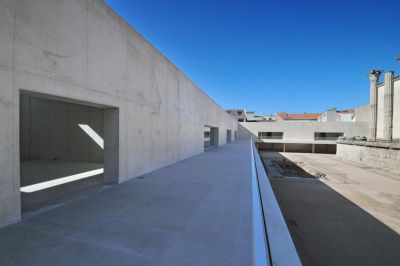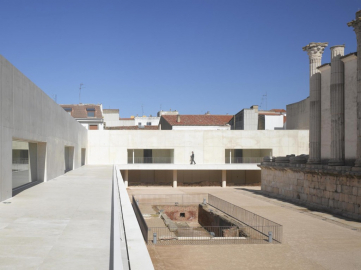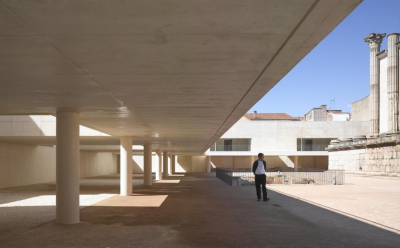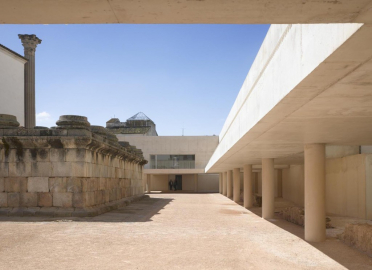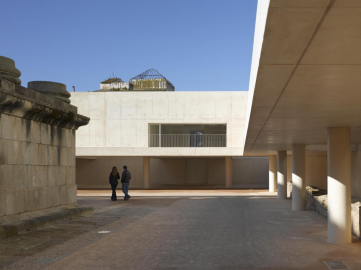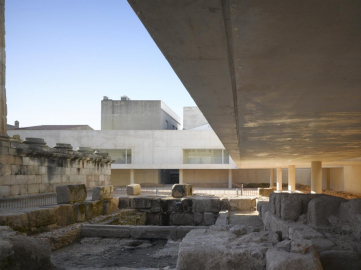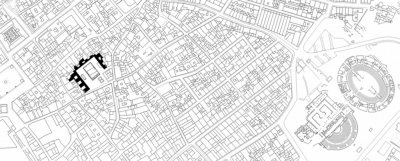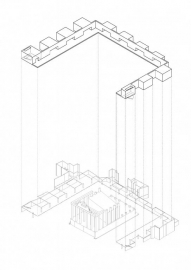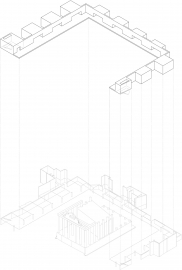Perimetral Building and Roman Temple of Diana Environments
The project is solved with a perimeter piece L-shaped, with its own syntax, sewing its edge with the city and creating a large square around the temple.
The perimeter frame is positioned on the edge of the site, away as possible from the temple, to achieve the greatest possible area of square. The building floats above the archaeological level, allowing a natural contact between the temple and the urban structure. The platform is at the same height as the basement of the temple. In the perimeter area, a concrete wall regulates the edge and creates services zones, supporting the hanging boxes. A flexible buffering zone occupies the interstitial spaces between the L piece and the back parts of the existing buildings.
The whole square will have an earth finishing, leaving the archaeological features that must be respected untouched. The piece in L is defined as an artificial stone, made of lime and aggregates characteristic of the place with the granite-like color of the podium of the Temple and always tending to a textured finish resembling the original stone.
L-shaped piece (Floating structure generates square limits) comprises:
Walls: Defines the empty zone and adds value to the temple.
Platform: It frees the archaeological level; route allows the visual relationship between the visitor and the temple.
Interstitial spaces: Flexible areas will host commercial and cultural uses. New order among the city and the square.
The project retrieves the center of the city in Roman times, understanding the Roman public space and its original design, using contemporary language and a technology according to our time. From a conceptual standpoint, the initial starting point was the definition of the project with its own syntax, not as a form but as a number of rules and guidelines that define how to act.
Sup:2158,19 m2

